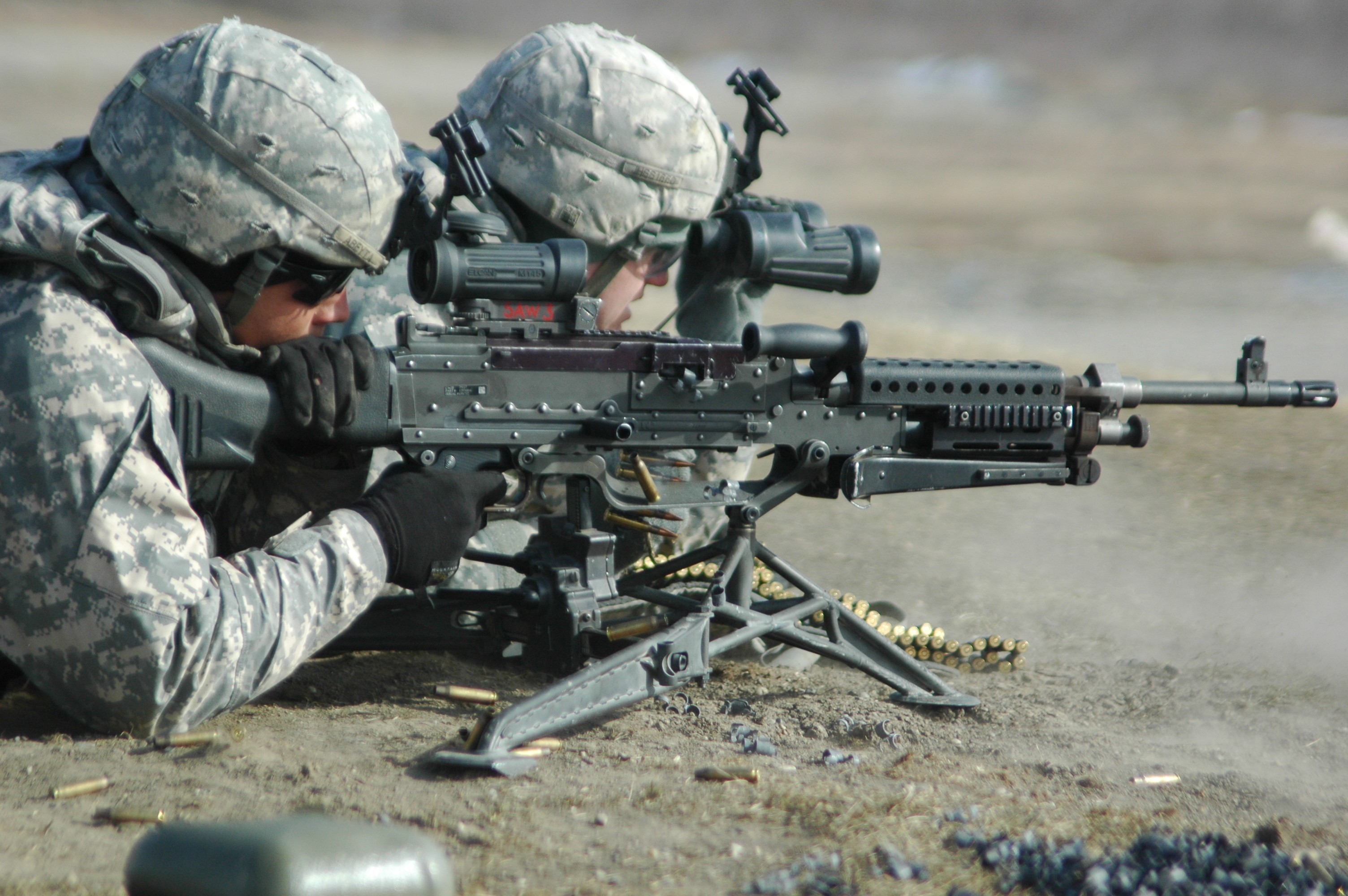
FORT WAINWRIGHT, Alaska - While training with the Stryker vehicle garners much of 1st Stryker Brigade Combat Team, 25th Infantry Division Soldiers' focus and time, Arctic Legion Soldiers from 1st Battalion, 24th Infantry Regiment, 1-25th SBCT, recently had an opportunity to brush up on some good, old-fashioned machine-gun training at Fort Wainwright's Small Arms Range Complex.
Almost 50 Soldiers from 1-24th weapons squads completed a four-day classroom course and two-day machine-gun range to train and test machine gunners April 1 through 9.
"This is a machine-gunner course for the whole battalion," said Sgt. 1st Class Mike Barrera, Headquarters and Headquarters Company, 1-24th. "It's for the weapons squad leaders just to get back to the basics and overall the training is really going great. The guys are getting a lot out of it and getting qualified."
Gunners fired at distances ranging from 10 to 800 meters during the exercise, but the machine gun can fire up to 1800 meters. The M240 machine gun is an impressive weapon system with tremendous capability, Barrera said. Being an effective machine gunner is not easy and requires skill and training.
"Setting up the weapon and manipulating its fires is an art," said Capt. Joseph W. Hansen, 1-24th assistant operations officer.
Barrera coordinated the event with Hansen and said the goal of the training was for Soldiers to understand the machine gun theory, operation and employment.
Barrera coordinated the event with Hansen and said the goal of the training was for Soldiers to understand the machine gun theory, operation and employment.
Citing the extensive history of the machine gun, Hansen said that it has been proven to be a fearsome influence in major battles throughout recent military history, including those following the United States D-Day invasion at Normandy where they were used by the German army.
"That's where my appreciation (for the weapon system) comes from, is knowing that the machine gun can change the entire outcome of a battle," he said.
Although learning the significant history, current relevance and technical aspects of their go-to weapon system is a compelling educational experience, Arctic Legion Soldiers have an even more practical reason for mastering their machine gun skills.
"The machine gun provides 70 percent of your fire in a dismounted infantry platoon," Barrera explained. They will still have fire support from their Stryker vehicles in combat, he said, but their unit is training for every eventuality in their next deployment, including the possibility that they will not always be with their vehicles.
The week-long exercise culminated with an early morning event April 9 including a half-mile run and stress fire.
The battalion recognized the gunners with the highest scores on the week's events. The best overall machine gun team was Spc. Matthew Waggoner, gunner from HHC, 1-24th, and Pfc. William Oliva, assistant gunner from HHC, 1-24th. The top marksmanship team and 2nd place overall machine gun team was Spc. Michael Germany, gunner from B Company, 1-24th, and Spc. Julian Beck, assistant gunner from B/1-24th.

Social Sharing